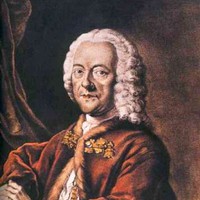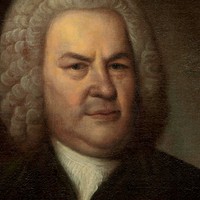Masters of the German Baroque with Jonathan Cohen



Telemann was arguably the most prolific composer ever, creating at least 3,000 works during his long career. He spent his student years and early professional life in Leipzig, and his legacy there, including the founding of the amateur Collegium Musicum, had a profound impact on Bach’s future tenure in the city. From 1721 until his death 46 years later, Telemann directed music for the principal churches of Hamburg. Unlike Bach, who never engaged with theatrical music, Telemann took up opera, composing at least 29 stage works. He also produced an enormous amount of instrumental music for secular entertainment, including about 125 orchestral suites.
Twice Telemann wrote music inspired by Don Quixote, the seminal novel by Miguel de Cervantes about a hapless knight-errant from La Mancha. Telemann’s one-act opera version can be traced to 1761, when he was 80; his orchestral Don Quixote Suite appears to have been composed much earlier, perhaps around 1720.
Telemann’s original manuscript gives the title, “Ouverture. Burlesque de Quixotte.” For this work in the style of a French dance suite, the “Ouverture” (as per the French spelling) sets the stage for the “burlesque” to come—a term for music of an exaggerated, comical character—beginning with the docile, droning strains of Don Quixote’s Awakening. The music becomes more vigorous for His Attack on the Windmills, and it turns quite literal with the downward, sighing motives in The Sighs of Love for Princess Dulcinea.
In Sancho Panza Tossed in a Blanket, a rising gesture imparts a sense of upward thrust. The next section gives contrasting views of Don Quixote’s horse, Rocinante, and Sancho Panza’s less energetic donkey. Don Quixote at Rest demonstrates that the knight’s head may be on a pillow but his mind is already imagining the next battles.
Aaron Grad ©2016
Buxtehude produced an extensive body of vocal and organ music for church use during his long tenure as an organist in Lübeck, Germany. On the side, he also composed and published secular chamber music, modeling the kind of diverse career that Telemann and Bach would later emulate.
Buxtehude probably composed the Sonata in C Major for Two Violins and Viola da gamba sometime before 1684, when he announced an upcoming publication of works in that vein. His format differed from the influential trio sonatas that Corelli started issuing from Rome in 1681, in that it added an independent line for viola da gamba (a bowed instrument in a range similar to the cello, but with frets tied to the neck). Besides the instrumentation, this Sonata is also notable for its structural freedom, changing character, texture and tempo with great subtlety and flexibility.
Aaron Grad ©2016

Bach likely composed his two extant violin concertos around 1730, not long after he agreed to lead Leipzig’s Collegium Musicum, founded in 1702 by a young Telemann. This talented amateur group gave weekly performances, often in the informal atmosphere of a coffeehouse, providing Bach a sociable venue for secular music.
Bach crafted his violin concertos using the ritornello structure popularized by Italians (especially Vivaldi) in which a main theme returns multiple times to punctuate the form. The essential theme of the first movement of the Violin Concerto No. 1 in A Minor emphasizes pairs of rising notes, first making a bold leap up the interval of a fourth, and then returning for a narrow rise of a half-step.
So much of the emotional tension in the Andante slow movement occurs in the simple but profound bass line: its steady pulses, its hopeful ascents, and its many long silences that leave the soloist with only the fragile support of violins and violas. The rolling triplet pulse of the Allegro assai finale is akin to the gigue (or, as it called in the British isles, the jig), the dance style that ends many of Bach’s instrumental suites.
Aaron Grad ©2016

Telemann, like Bach, fashioned his concerto style after the Italians, tapping both the Corelli style from Rome and the newer northern trends from Vivaldi and company. Telemann probably composed the Concerto in B Minor for Two Flutes and Bassoon while he was working in Frankfurt between 1712 and 1721. One of the curiosities of this concerto concerns its third solo part, which the earliest surviving source lists as a “calchedon,” an obscure bass lute. A 1740 copy rewrites that line for bassoon, which remains the customary accompaniment to the flutes.
Aaron Grad ©2016

From 1723 until his death in 1750, Johann Sebastian Bach held the demanding position of Thomaskantor, directing music for the principal churches of Leipzig and training the young choristers under his care. Somehow in his spare time he also managed to lead the Collegium Musicum, an amateur ensemble that mounted weekly performances. The Collegium Musicum provided Bach an outlet where he could present secular music not fit for church — including his four Orchestral Suites — played by spirited local amateurs, his own sons among them.
Manuscript sources date the Orchestral Suite No. 3 to around 1731, with some of the parts in Bach’s own hand, and others written out by his son Emanuel. The term Bach would have used for such a work was Ouverture, the same heading given to the substantial first moved that he styled (and spelled) in the French manner. The second-movement Air, known familiarly as the “Air on the G String,” was made famous through a 19th-century rendition by violinist August Wilhelmj, who transposed the melody so he could play it all on his lowest string. An air, equivalent to the Italian “aria,” is a vehicle for song-like melodies, as opposed to the dancing styles that comprise the remainder of the suite.
The first dance form, the Gavotte, features a heavy pulse of two beats per measure, with the introductory upbeat of each phrase emphasized. In the sprightly Bourrée, trumpets and timpani enliven the pulse by accentuating the weak beats. The closing Gigue, a dance adapted in France from the jigs of the British Isles, retains the reeling triplet pulse of its folk source.
Aaron Grad ©2022
Get driving directions and find nearby parking.
Find dining options close to the venue.
View seating charts to find out where you'll be seating.
Get driving directions and find nearby parking.
Find dining options close to the venue.
View seating charts to find out where you'll be seating.
